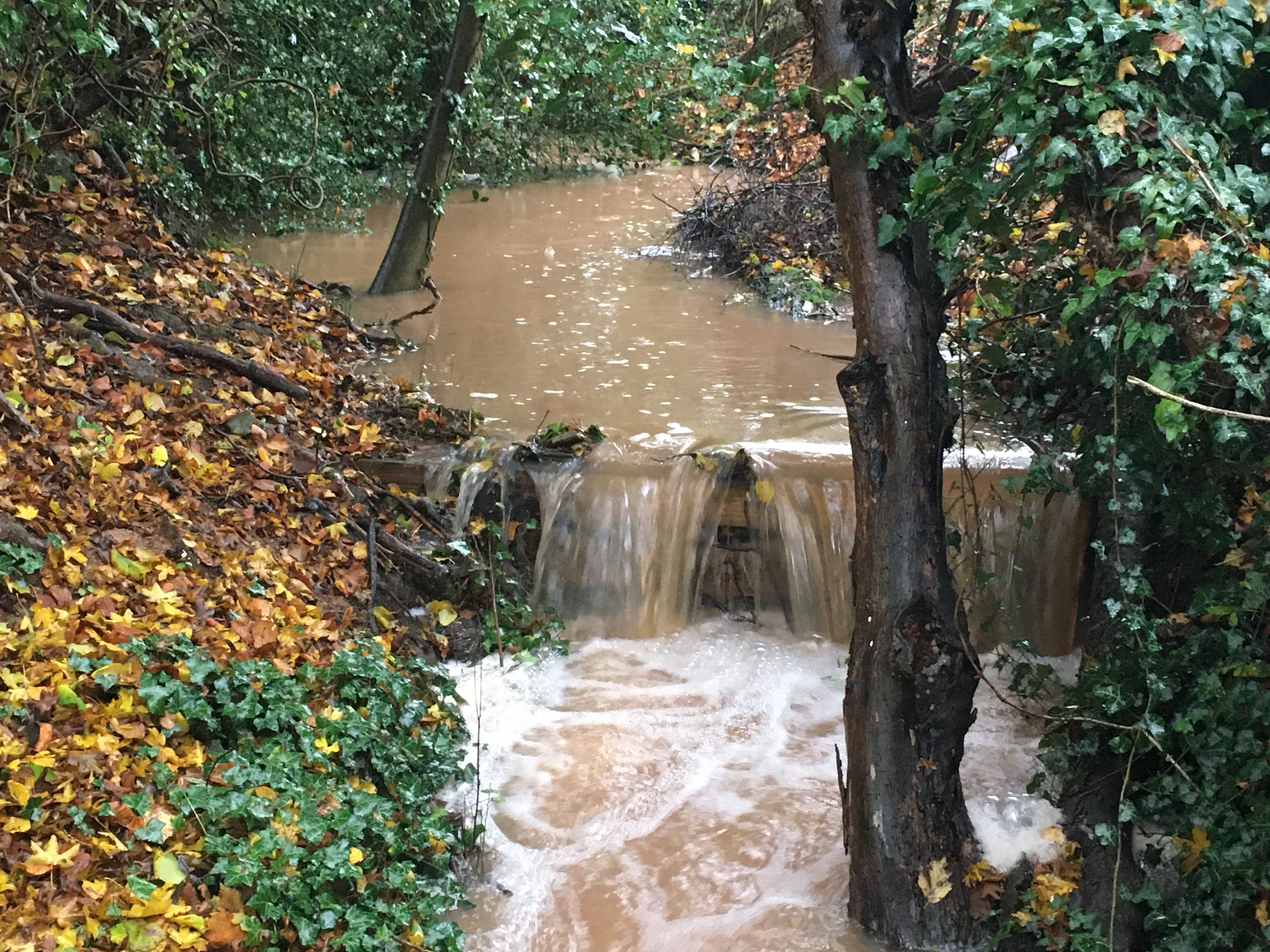Lower Trent & Erewash Catchment Partnership
- Catchment HostThe Trent Rivers Trust
- River Basin DistrictHumber
- Management CatchmentTrent Lower and Erewash
- Management Catchment ID3052
Catchment partnership vision
A catchment with a healthy, functioning water environment with a rich and diverse collection of habitats and species. Areas of conservation value in good condition and connected by wildlife corridors. Fish can move freely throughout the catchment with ample spawning and nursery areas. Reduced flood risk through the use of natural solutions with properties and livelihoods resilient to climate change. Floodplains managed to store flood water as well as other benefits. High level of public understanding of the importance of rivers and their floodplains for people and wildlife. Communities involved with a local river projects with a range of recreation and accessible sites throughout the catchment. Water quality is improved and raised awareness of pollution risk from residential, commercial, rural and urban sources. Priority areas will benefit from focused attention to help them achieve objectives with partners supporting and working together to maximise achievements.

Related websites
Find out more about the activities and ambitions of this catchment partnership and how you can get involved to help improve the water environment in the catchment.
Catchment challenges
Current challenges identified by partnership

Physical modifications
Multiple weirs restrict fish passage throughout the catchment, modifications have caused a disconnect to the floodplain and reduced biodiversity

Pollution from agriculture and rural areas
Majority of waterbodies have agricultural reasons for not achieving good ecological status

Pollution from waste water
A majority of waterbodies are failing due to point source pollution from waste water
Wider water environment challenges identified by partnership
Build environmental resilience and adaptation to climate change
Climate change is the biggest threat to biodiversity and natural flows
Protect and restore healthy soils and nutrient balance
Increased agricultural runoff results in soil and nutrients entering rivers, impacting biodiversity, water quality and crop productivity
Support Nature Recovery Network and Local Nature Recovery Strategy
This is a mechanism for further collaborative working and coordinating positive gains in the catchment for biodiversity and habitat connectivity
Connecting communities with nature
Increasing public awareness around wildlife and nature encourages local action and improves wellbeing
Nature Recovery, designated areas for nature and biodiversity
The Trent is a vital wildlife corridor with designated sites; protecting and enhancing its connectivity is paramount to the rest of the catchment
Removing plastics/litter from the water environment
Plastic pollution has visually highlighted the poor state of our rivers, addressing it helps to raise the public profile of the partnership
Future challenges predicted by partnership

Changes to the natural flow and water levels

Pollution from waste water

Pollution from agriculture and rural areas
Future challenges predicted by Environment Agency
Future challenges in 2050
- Invasive Non-native Species
- Pollution from waste water
- Changes to the Natural Flow and Water Levels
Emerging challenges
- Changes to the Natural Flow and Water Levels
- Pollution from waste water
- Pollution from Agriculture and Rural Areas
Partnership success highlights 2016 to 2021
Major Lower Trent and Erewash catchment successes are through creating multiple ‘hubs’ across the catchment to aid collaborative project development and delivery. A key hub is the Trent Gateway on the Lower Trent, focussing on improving fish passage to key spawning areas on the Derwent, improving fry habitat and reconnecting floodplain. Colwick fish pass is a major achievement expected to be completed in 2023, the largest fish pass in the country. Another important focus for the Trent is collaborating with partners to understand better how people use the river and the green spaces nearby, to support funding bids to connect people and places along the Trent. Other hubs include: Erewash, Nottingham urban, Bottesford Beck & Eau, and rural rivers such as the Greet and Devon. Recent restoration plans and scoping studies, developed with partners, are being used to help guide project delivery. Collaboration with universities has been beneficial for looking at, for example: fish migration, carbon capture and macroinvertebrates in urban areas. Project work has focused on catchment issues including: barriers to fish, water quality, habitat restoration, floodplain reconnection and natural flood management. The ‘River Starts Here’ project has engaged local businesses to improve water quality and restore natural processes. Other projects include:
- Trees on the Trent, a large-scale planting project led by Trent River Trust to increase bank-side tree coverage on the Lower Trent
- habitat improvement works with Nottinghamshire Wildlife Trust at Gresham Marshes
- fish passage works at Langley Mill with the Wild Trout Trust
- Erewash Meadows wetland and floodplain reconnection plans.

Partnership development plans
Increase partner collaboration on catchment-scale, multi-year projects and funding bids to help deliver shared catchment priories. More widely promote what is happening across the Lower Trent and Erewash catchment, especially in relation to the Trent Gateway. Continue to support local projects, organisations and authorities with shared aims to benefit the Trent. Work with businesses, landowners, schools and communities to increase awareness, appreciation and engagement with their local river, in order to help tackle key challenges but to also improve wellbeing and local action.
Partnership priority actions and measures for 2022 to 2027
Confident
Building fish pass at Holme Sluices (Colwick), largest barrier on the main Lower Trent
- Reason for measure
- Mitigate the impacts on ecology from physical modifications in modified waters
- Delivery mechanism
- EA Flood/coastal risk management programme
- Location
- Trent from Soar to The Beck
Confident
Erewash Meadows Restoration , designed to reconnect floodplain and increase wetland area to improve biodiversity
- Reason for measure
- Manage modified habitats
- Delivery mechanism
- Landfill Communities Fund
- Location
- Erewash from Source to Nethergreen Brook
Confident
Averham Fish Tracking Study
- Reason for measure
- Mitigate the impacts on ecology from physical modifications in modified waters
- Delivery mechanism
- WEIF Water Environment Improvement Fund
- Location
- Trent from Soar to The Beck
Confident
Langley Fish Passage, design and capital works to open up fish passage in the Erewash
- Reason for measure
- Mitigate the impacts on ecology from physical modifications in modified waters
- Delivery mechanism
- WEIF Water Environment Improvement Fund
- Location
- Nethergreen Brook Catchment (trib of Erewash)
Confident
Trees on the Trent, planting trees along the main River Trent and some areas along tributaries to enhance fish habitat and biodiversity
- Reason for measure
- Mitigate the impacts on ecology from physical modifications in modified waters
- Delivery mechanism
- Other local funding
- Location
- Trent from Soar to The Beck
Confident
Continuation of the enhancements to Attenborough SSSI Nature Reserve and the River Erewash
- Reason for measure
- Control or manage urban diffuse pollution
- Delivery mechanism
- Other local funding
- Location
- Attenborough Nature Reserve - Main Pond
Less certain
Fry Refuge habitat enhancement project- to increase backwaters on main river Trent for juvenile fish and elvers
- Reason for measure
- Mitigate the impacts on ecology from physical modifications in modified waters
- Delivery mechanism
- WEIF Water Environment Improvement Fund
- Barriers to delivery
- Landowner permissions secured
- Location
- Trent from Soar to The Beck
Less certain
Devon and Belvoir catchment river restoration, natural flood management and agricultural diffuse pollution project
- Reason for measure
- Control or manage rural diffuse pollution
- Delivery mechanism
- WEIF Water Environment Improvement Fund
- Barriers to delivery
- Landowner liaison and permissions, funding
- Location
- Devon from Source to Smite
Less certain
Langfield Lowfields habitat connection to main Trent & Besthorpe Nature Reserve - improve habitat connectivity and fish refuge
- Reason for measure
- Mitigate the impacts on ecology from physical modifications in modified waters
- Delivery mechanism
- Private Investment
- Barriers to delivery
- Mineral company and landowner permissions, flood modelling
- Location
- Trent from Soar to The Beck
Less certain
Averham Fish pass - design and build fish pass to open up passage on the Lower Trent as part of Trent Gateway
- Reason for measure
- Mitigate the impacts on ecology from physical modifications in modified waters
- Delivery mechanism
- Heritage Lottery Fund
- Barriers to delivery
- Further feasibility and landowner permissions, funding
- Location
- Trent from Soar to The Beck
Less certain
River Greet Habitat Restoration - improve geomorphology and natural processes of river and riparian habitats
- Reason for measure
- Mitigate the impacts on ecology from physical modifications in modified waters
- Delivery mechanism
- WEIF Water Environment Improvement Fund
- Barriers to delivery
- Landowner permissions, management agreements, flood risk assessments
- Location
- Greet Catchment (trib of Trent)
Wider water environment
Trent Gateway - public engagement and recreational improvements
- Reason for measure
- Connecting communities with nature
- Delivery mechanism
- Heritage Lottery Fund
- Location
- Trent from Soar to The Beck
Catchment Partnership contributors
Partners involved in the creation of this page and the actions of the partnership: